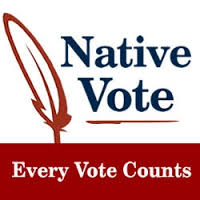By Amber Penn-Roco
The American Bird Conservancy (ABC) recently filed a Complaint in the U.S. District Court for the Northern District of California against the U.S. Fish and Wildlife Service (USF&W) and the U.S. Department of the Interior, challenging a final rule that loosened protections for bald and golden eagles for the sake of wind energy developers.
The Bald and Golden Eagle Protection Act and the Migratory Bird Treaty Act prohibit the killing of bald and golden eagles without a federal permit. In the Complaint, ABC challenged a rule that extended the total maximum duration of the federal permits, from 5 years to 30 years. ABC alleged that the final rule violates the National Environmental Policy Act, the Bald and Golden Eagle Protection Act and the Administrative Procedure Act.  ABC alleged that the rule was “promulgated specifically to respond to the wind power industry’s desire to facilitate the expansion of wind energy projects in areas occupied by eagles.” ABC argued that by extending the length of the permit, the rule eliminated the need for wind companies to renew permits. The renewal applications would have required agency decision-making processes, necessitating public comment. Therefore, ABC argued that the rule interferes with the ability of the public to participate and meaningfully advocate for eagles.
ABC alleged that the rule was “promulgated specifically to respond to the wind power industry’s desire to facilitate the expansion of wind energy projects in areas occupied by eagles.” ABC argued that by extending the length of the permit, the rule eliminated the need for wind companies to renew permits. The renewal applications would have required agency decision-making processes, necessitating public comment. Therefore, ABC argued that the rule interferes with the ability of the public to participate and meaningfully advocate for eagles.
The rule has rightfully drawn opposition from Indian Country. The USF&W initially attempted to consult with Indian Country; the agency met with the National Congress of American Indians. The meeting did not appear to be effective, as one month later the NCAI passed a resolution accusing the USF&W of failing to meaningfully consult with tribes. The Nez Perce, San Carlos Apache, Sault Ste Marie Chippewa Indians and Hopi Tribes each submitted public comments opposing the rule, in part due to of the lack of effective tribal consultation.
Outreach to NCAI is by no means the consultation required by federal law. Indeed, as one federal court explains: “grouping tribes together (referring to consultation with ‘tribes’) is unhelpful: Indian tribes aren’t interchangeable, and consultation with one tribe doesn’t relieve the [Fed] of its obligation to consult with any other tribe that may be a consulting party.” See Quechan Tribe of Fort Yuma Indian Reservation v. U.S. Dept. of Interior (S.D. Cal. 2010). Not to mention, NCAI isn’t even a tribe.
ABC’s lawsuit will hopefully force the United States to reconsider the impacts of the rule on tribally sacred bald and golden eagle populations. However, none of the plaintiffs in the lawsuit are tribes, and, therefore, the lawsuit may not reflect Indian interests. Tribes may be formulating their own challenges to the final rule. Alternatively, as the record reflects a lack of government-to-government consultation, tribes should consider using this as a basis to intervene in ABC’s action. Unfortunately, as the final rule has been promulgated, tribes must now look to litigation to ensure that tribal interests are considered.
Amber Penn-Roco is an Associate with the Seattle office of Galanda Broadman, PLLC. Amber’s practice focuses on complex land and environmental issues and multi-party litigation involving tribal sovereignty, torts and hazardous materials. She is an enrolled Chehalis Tribal Member.

















